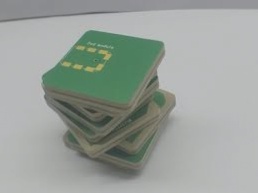PCB Testing Methods: A Comprehensive Guide to Quality Assurance in Electronics Manufacturing

Why PCB Testing is Critical for International Electronics Trade
When sourcing printed circuit boards for global export markets, quality assurance through rigorous PCB testing methods becomes non-negotiable. The cost of PCB failure in international shipments can be catastrophic – from product recalls to damaged brand reputation. According to industry standards, comprehensive testing should be integrated at every stage of the PCB manufacturing process in China and other major production hubs.
Key Components Analyzed During Professional PCB Testing
Professional PCB testing services examine all critical electronic components that form the circuit architecture. When evaluating how to test PCB boards effectively, manufacturers focus on these key elements:
- Capacitors and resistors for proper electrical characteristics
- Diodes and fuses for correct polarity and ratings
- Inductors and transistors for proper functionality
- Integrated circuits (ICs) and relays for operational integrity
The 7 Most Effective PCB Testing Methods for Export-Quality Electronics
1. In-Circuit Testing (ICT) – The Gold Standard
In-circuit testing remains the most comprehensive method for PCB quality control in high-volume production. This automated approach delivers:
- 85-90% test coverage (100% in ideal conditions)
- Elimination of human error through computerized analysis
- Ideal for Ball Grid Array (BGA) components
Best applications: Final product validation for electronics manufacturers in China exporting to global markets.
2. Flying Probe Testing – Flexible and Cost-Effective
For businesses needing how to test PCB prototypes or small batches, flying probe testing offers:
- No custom fixture requirements
- Excellent for detecting shorts, opens, and component values
- Lower upfront costs compared to ICT
3. Automated Optical Inspection (AOI) – Visual Defect Detection
This automated PCB inspection method compares board images against design specifications to identify:
- Soldering defects
- Component placement errors
- Surface imperfections
Best practice: Combine with other methods for comprehensive PCB quality assurance.
4. Burn-In Testing – Stress Testing for Reliability
Critical for high-reliability PCB applications, this method involves:
- 48-168 hours of maximum power operation
- Early detection of “infant mortality” failures
- Essential for military, aerospace, and medical electronics
5. X-Ray Inspection – Seeing Beneath the Surface
AXI (Automated X-Ray Inspection) is indispensable for:
- Examining hidden solder joints under BGA packages
- Inspecting internal traces and vias
- 3D AXI provides faster, more detailed analysis
6. Functional Testing – Real-World Simulation
The final validation step before shipping, functional circuit testing ensures:
- Compliance with international safety standards (UL, CE, etc.)
- Proper operation under simulated working conditions
- Customer-specific performance parameters are met
7. Specialized Functional Tests – Targeted Validation
Additional PCB testing procedures include:
- Contamination testing for ionic residues
- Solderability testing for manufacturing readiness
- Time-domain reflectometry for high-frequency boards
Choosing the Right PCB Testing Strategy for Global Export
“The optimal PCB testing approach combines multiple methods tailored to your product’s requirements, target markets, and compliance needs.”
Key considerations when selecting PCB testing services:
- Product application and reliability requirements
- Target market compliance standards
- Production volume and cost constraints
- Technical support from your PCB manufacturer in China
Partnering with a Certified PCB Manufacturer
For businesses seeking reliable PCB suppliers for export, partnering with an ISO-certified manufacturer that implements comprehensive testing protocols ensures:
- Consistent product quality across batches
- Compliance with international trade regulations
- Reduced risk of field failures and returns
- Technical support for testing protocol development
By implementing the appropriate combination of these PCB testing methodologies, electronics manufacturers can deliver export-ready products that meet the most stringent international quality standards.

